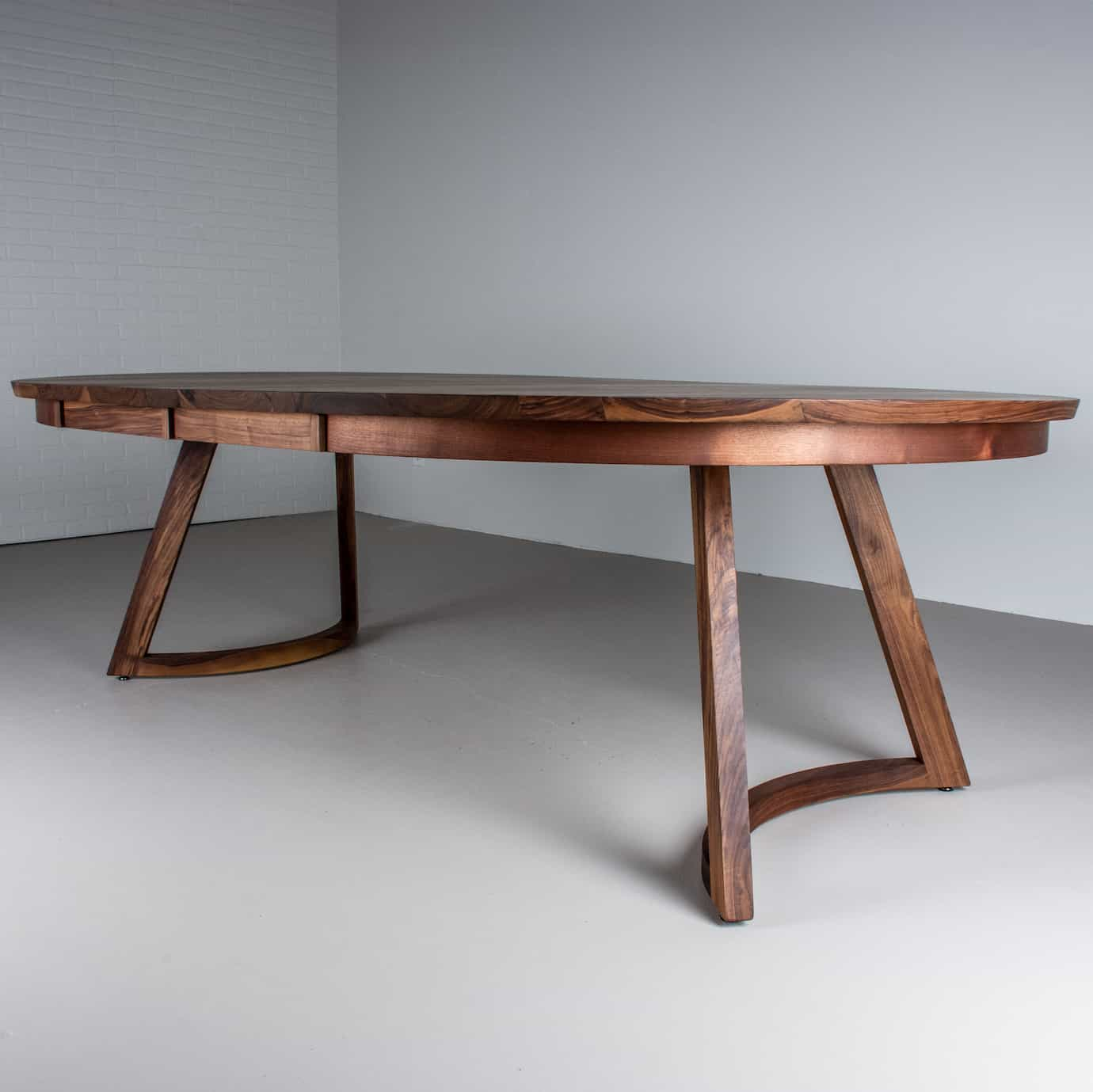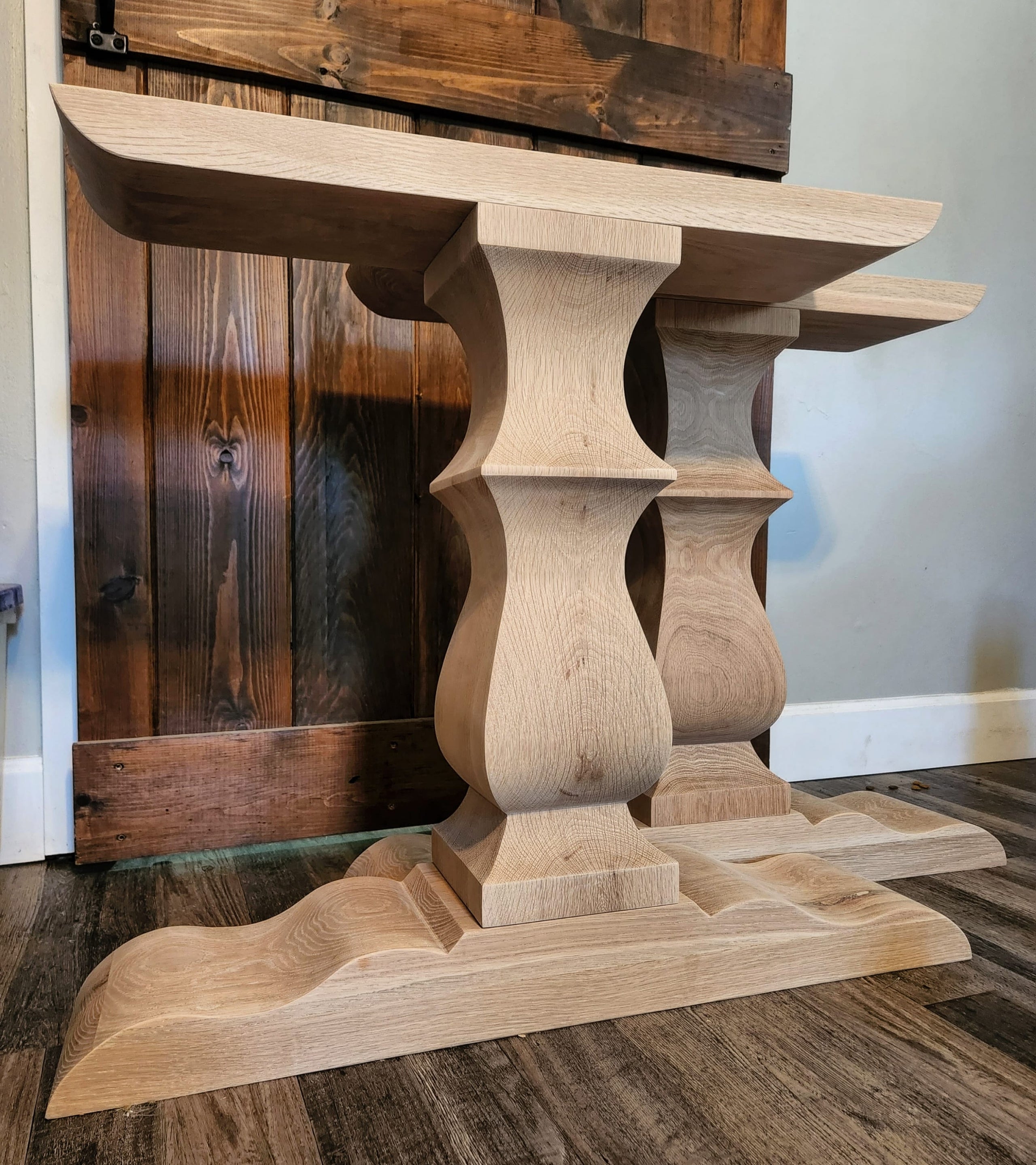Strong and Fashionable Selections for Resilient Dining Table Legs Wood Solutions
Strong and Fashionable Selections for Resilient Dining Table Legs Wood Solutions
Blog Article
Checking Out the Various Sorts Of Dining Table Legs Timber for Your Dining Space
The option of eating table legs wood can exceptionally impact both the functional and visual high qualities of your eating space. Strong timber choices, such as oak and walnut, supply a traditional look with unequaled resilience, while engineered wood choices offer innovative layouts that imitate the richness of natural grains. In addition, the expanding fad of recovered timber introduces a lasting component that allures to ecologically mindful customers. As we explore these various alternatives, it becomes necessary to take into consideration not just the visual charm yet additionally the functional implications of each material option. What elements should assist your decision?
Strong Timber Options

In addition, strong wood is renowned for its toughness and longevity. Unlike crafted products, strong wood is less vulnerable to bending and damage in time when correctly maintained. This makes it an excellent selection for family members or those that often host events. Each item of strong timber is one-of-a-kind, showcasing individual features that contribute to the beauty and personality of the dining table.
Additionally, solid timber can be ended up in countless means, varying from all-natural oils to discolored finishes, allowing property owners to customize their furniture to match their decor. In recap, picking strong wood for eating table legs not just makes sure structural stability but also boosts the aesthetic charm of the dining location, making it a beneficial investment for any home.
Engineered Timber Alternatives

Plywood, constructed from numerous layers of timber veneer, is stable and specifically solid, making it an outstanding choice for eating table legs. Its layered composition permits it to endure changes in moisture and temperature far better than conventional solid timber. MDF, on the other hand, supplies a smooth surface for paint or veneering, allowing developers to accomplish a polished appearance while preserving structural integrity.
Particleboard, often made use of in affordable alternatives, offers decent stamina and is light-weight, making it much easier to handle. Nevertheless, it might not be as resilient as plywood or MDF. It is necessary to consider the designated usage and desired visual when selecting engineered timber choices. These materials not only enhance the performance of eating rooms but likewise permit for better design versatility, making certain that contemporary and conventional designs can coexist harmoniously.
Reclaimed Timber Includes
Redeemed timber supplies an one-of-a-kind mix of sustainability and personality, making it a progressively prominent option for dining table legs. Sourced from old barns, factories, and other structures, reclaimed timber personifies a background that new materials simply can not replicate. Each piece brings its own tale, noted by distinctive imperfections, knots, and varying grain patterns, which contribute to a table's special visual charm.
In addition to its visual charm, reclaimed wood is an environmentally pleasant choice. By repurposing previously used products, it lowers the need for brand-new lumber, therefore aiding to conserve forests and decrease waste. This straightens with an expanding consumer choice for sustainable techniques in furnishings.
Furthermore, recovered timber is typically extra sturdy than freshly gathered timber because of its age. The all-natural drying out procedure that reclaimed timber undergoes results in a denser and stronger product, making it much less susceptible to warping and splitting. This boosts the durability of eating tables, allowing them to hold up against the rigors of day-to-day use.
Softwood vs. Wood
When selecting table legs, recognizing the distinctions between softwood and wood is vital for achieving both visual and practical objectives. Softwoods, originated from coniferous trees, such as pine and cedar, are characterized by their lighter weight and ease of manipulation. They generally display an even more rustic look, making them ideal for laid-back or country-style dining spaces. Softwoods are usually less long lasting than hardwoods, which can be a consideration for households or those seeking durability in their furniture.
On the various other hand, hardwoods, sourced from deciduous trees like cherry, oak, and maple, are renowned for their thickness, toughness, and resilience. The intricate grain patterns and rich shades of woods offer a ageless and advanced allure, making them excellent for official dining setups. While woods tend to be extra costly and larger, their durability versus deterioration frequently validates the financial investment.
Inevitably, the selection between softwood and wood for eating table legs must align with your design vision, use requirements, and spending plan, making certain that your eating space shows your personal design while continuing to be functional in time.

Therapies and coatings
The aesthetic charm and durability of table legs can be dramatically boosted with different coatings and therapies. These processes not just protect the timber from damages but also boost its appearance, permitting it to complement varied indoor designs.
One usual visit their website therapy is staining, which permeates the wood and improves its all-natural grain while adding color. Stains provide an abundant, sophisticated look, enabling house owners to match their furniture with existing style. Alternatively, clear finishes such as polyurethane or varnish produce a protective layer without changing the wood's initial color, making sure durability against deterioration.
Furthermore, all-natural oils, like tung or linseed oil, nourish the wood and use a refined shine, all while being environmentally friendly. These oils allow the surface area to breathe, protecting against wetness accumulation and possible warping.
For those looking for a rustic beauty, troubled or weathered finishes can be applied to produce an aged look, adding personality to the piece. Eventually, the choice of treatments and coatings depends upon personal choice, preferred aesthetics, and the details wood type, making it crucial to take into consideration these aspects when picking eating table legs for your area.
Conclusion
In verdict, the choice of table leg products substantially influences both the useful and aesthetic facets of a dining room. Strong timbers, crafted alternatives, and reclaimed options each deal distinct benefits, satisfying various preferences and needs. Comprehending the differences between hardwoods and softwoods, together with ideal coatings and treatments, enables for notified decision-making. Ultimately, the selection More Info of wood type more need to align with preferred design, longevity, and environmental considerations, improving the total eating experience.
The option of dining table legs timber can greatly affect both the visual and functional qualities of your eating space - Dining Table Legs Wood. Solid wood alternatives, such as oak and walnut, offer a classic look with unequaled toughness, while engineered wood choices provide cutting-edge styles that imitate the splendor of all-natural grains. Solid timber supplies an ageless quality that can elevate the general design of an eating room. Each item of solid wood is distinct, showcasing specific attributes that add to the appeal and personality of the dining table
Furthermore, recovered wood is typically extra long lasting than recently collected wood due to its age.
Report this page